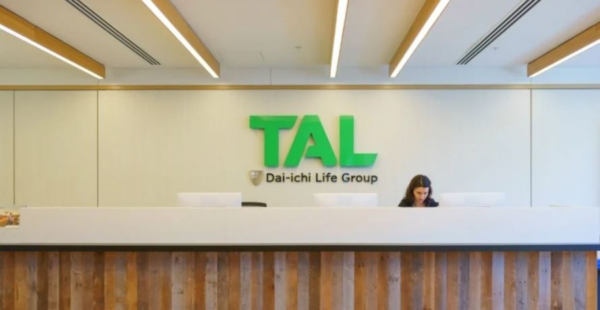LAXETTE LOGIC

Financial Newswire’s life/risk expert, Col Fullagar, looks at the murky complexity of handling premium refunds around trauma cover.
From time to time there is an outbreak of what might be termed Laxette Logic in our fair industry with one being reported recently in the bowels of the office of a well-known life insurer.
This particular outbreak centred on the matter of premium refunds, specifically the treatment of same when a claim is backdated.
The scenario is thus ………
In 2024 an insured lodged a trauma insurance claim under the insured event of Cancer for which the date of diagnosis was 2022. The claim was admitted and paid, however, when it came to the matter of a premium refund, the insurer espoused:
“The customer continued to pay premiums and maintained cover for any subsequent trauma cover events in the intervening period between his cancer diagnosis and the date the trauma claim was lodged. If, within that period, he had been diagnosed with another trauma cover condition, (INSURER) continued to be on risk and any claims made would have been honoured. On that basis I believe a refund of all premiums to the date of diagnosis is not in line with the policy terms.”
For an insured without adviser representation this logic might sound sufficiently fair and reasonable such that they would walk away and accept their fate; however, if this logic was allowed to run the scenarios below would struggle for an explanation.
Also, to be clear, what the insurer is saying is that if the insured had not made the 2022 backdated trauma claim, the policy would have continued and any insured event occurring between 2022 and 2024 would have been honoured. This is of course correct, but the problem is that a backdated claim was made and thus the explanation does not automatically apply.
Scenario 1 – An insured has a term and TPD policy. In 2024 he lodges a claim for a condition that resulted in a cessation of work in 2022. The claim is admitted with an effective date of 2022. Should premiums from 2022 to 2024 be retained or refunded? Prior to answering, please refer to Scenario 2.
Scenario 2 – Scenario 1 applies except the insured has a term and trauma policy and TPD is one of trauma insured events. Would this be treated differently and, if so, why and in what way?
In effect, the insurer’s logic relies on the fact that the policy and cover continued between 2022, the date of the insured event and 2024 the date of the benefit payment. When questioned on this point, the insurer had another bout of L.L. and stated : “In relation to your query the policy does stipulate that the policy ends if we pay a benefit …… In this instance we paid the trauma benefit in 2024, not 2022.”
Again, it is correct that risk insurance policies contain a clause to the effect that the policy ceases when the full benefit amount is paid, but is this the effective date of the benefit payment ie 2022 in the above examples or the actual date of payment ie 2024 in the above examples?
If it is the latter, and the insurer paid a death claim in 2024 for an insured who died in 2022, would it retain premiums from 2022 to 2024? The obvious answer is No, premiums would be refunded. Again, the insurer was challenged on this point giving rise to the response: “I appreciate your position, and this would be correct if we were paying a death claim, however, this is a trauma claim.”
Yet again, if this logic was correct, the insurer is suggesting that the policy end date for a death claim is the date of the insured event ie death, but the policy end date for a trauma policy is the date the benefit amount is actually paid ….. which, of course, makes no sense.
If the reader is confused at this point, spare a thought for the insured.
The point the insurer is missing is that a policy ends at the effective date of a claim being paid ie 2022 in the above examples. This is the case irrespective of when the claim is lodged and/or the proceeds paid and/or the policy placed out of force on the insurer’s online system. After a policy ends, premiums similarly end, and any premiums paid after the effective date of the policy ending should be refunded.
If an insured suffered a trauma insured event in 2022 and 2024 and presented themself to the insurer’s office in 2024 to lodge the two claims, the insured events would be assessed in date order with the earlier ie the 2022 claim, being assessed first. If the 2022 claim is accepted and paid, the 2024 claim is of no consequence because the policy has ended. If the 2022 claim is not accepted, premiums from 2022 to 2024 are retained and the 2024 claim is assessed. If it is accepted and paid, the policy and premiums end. If it is not accepted, the policy and premiums continue.
The above logic holds for all lump sum claims when the full benefit amount is paid albeit death claims by their nature bring with them a certain finality. If only part of the policy proceeds is paid or death cover is greater than trauma cover, the logic holds in proportion.
The reason the above consistently applies is due to the fundamental structure of risk insurance policies ie when term insurance first came on the scene in or around 1980 the benefit amount was payable if the one insured event, death, occurred.
When Total and Permanent Disability (“TPD”) options became available sometime later, the adding of TPD cover to a term insurance policy meant the benefit amount was payable if the insured either died or was TPD, whichever came first.
When trauma insurance options became available, the adding of trauma cover meant that the benefit amount was payable if the life insured either died, was TPD or suffered one of the increasing number of trauma insured events, whichever came first.
In all cases, however, the benefit amount was payable once and for the first of the insured events that occurred.
The logic similarly holds for revenue claims as evidenced by Scenario 3 below:
Scenario 3 – An insured has an income protection insurance policy. In 2024 he lodges a claim for a condition that resulted in a cessation of work in 2022. The claim is admitted with an effective date ie start date of the waiting period, of 2022. The premium waiver comes into effect such that all premiums paid from 2022 to 2024 are refunded. If the insurer’s logic applied, the waiver would not apply to premiums between 2022 and 2024.
Waiver of premium benefits on lump sum policies apply in an equivalent way.
Finally, whilst not entirely relevant, the matter of buy-back benefits should be mentioned. These benefits may refer to the cover being “reinstated” but this word has two meanings:
- The common usage meaning of something being placed in an equivalent position after the occurrence of an event, for example, the government was reinstated after the coup was defeated; and
- The insurance jargon usage, for example, the insured paid the missed premiums on their lapsed policy which was then reinstated i.e. the original policy was brought back into force.
Any reference to cover reinstatement after a trauma insured event has occurred is a reference to the common usage meaning in so far that a new policy is issued albeit with equivalent terms to the one under which the trauma claim was paid.
In closing, it is respectfully suggested that any adviser with clients who the adviser believes have been affected by an outbreak of Laxette Logic with a resultant loss of premium refund entitlements should consider approaching said insurer and requesting a re-examination.
And, for any wondering why the outbreak is so named, please write in for an explanation !!!











love your work Col!